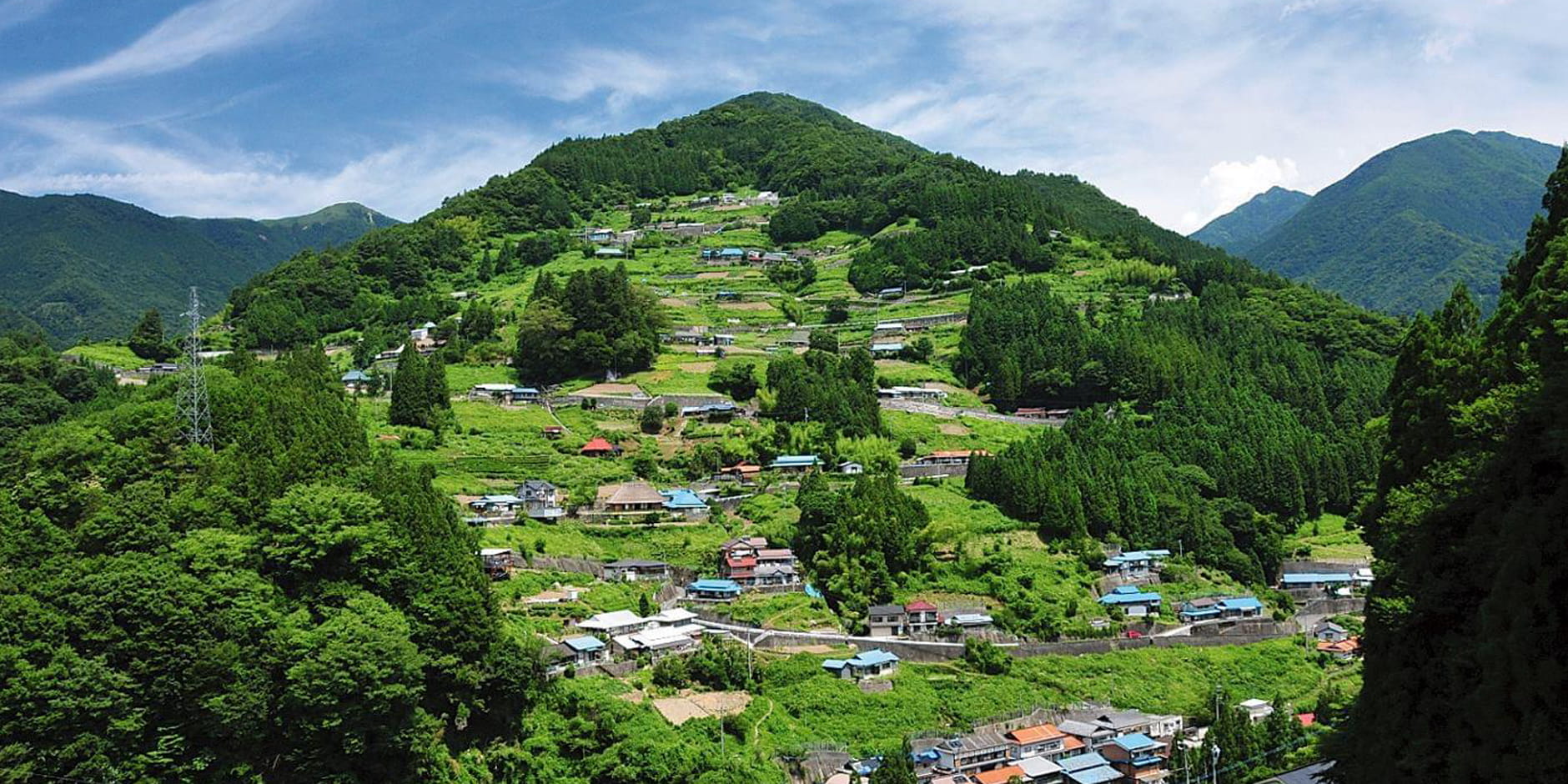
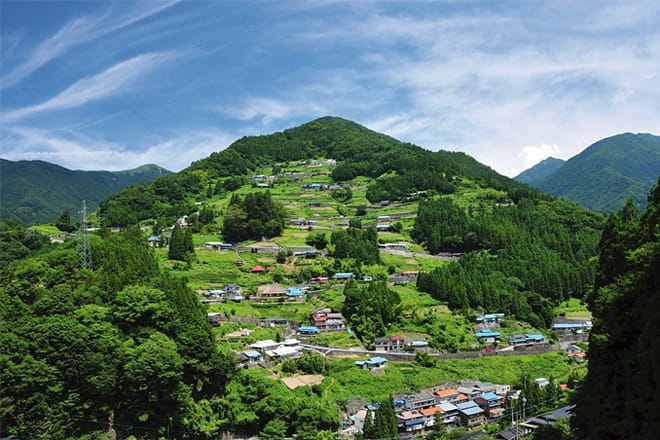
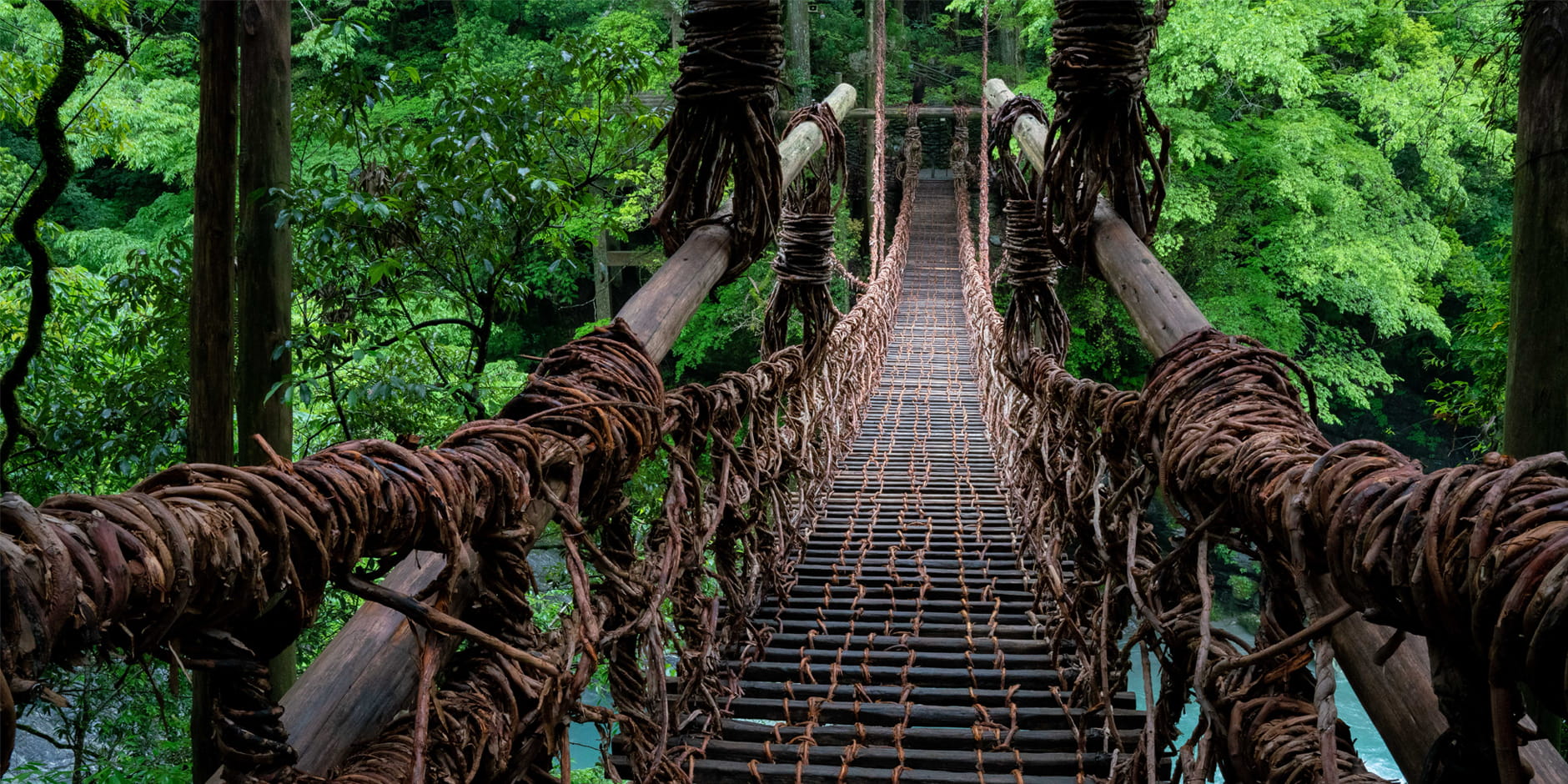


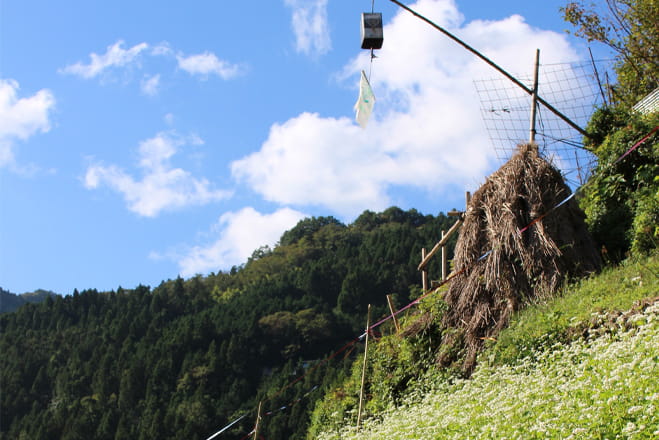
In Nishi-Awa, small hamlets cling to the mountainsides, offering a glimpse of an unspoiled Japan—where humans and nature coexist in harmony. Because the land is largely unsuitable for rice paddies, the local people have grown a variety of rice alternatives and still do so today. The seeds of such crops and other vegetables that are similar to their original varieties are collected and stored by farmers, thereby preserving valuable genetic resources.
Additionally, in the “Nishi-Awa Steep Slope Land Agriculture System,” a certified GIAHS, grasses are harvested and dried in heaps to create haystacks called “koeguro,” which are then used to fertilize fields, prevent erosion, and retain moisture. This traditional technique results in sculptural forms that have become an aesthetic landmark of the region and a tourist attraction.
Another tradition you can still observe in this area is the ancient Nishi-Iya Jindai Odori dance, which originated over 1,100 years ago as a “rain dance” ritual. It’s designated as an Important Intangible Folk Cultural Property of Japan and is included on UNESCO’s Intangible Cultural Heritage list. The sight of the performers adorned with gorgeous flowered hats dancing to the accompaniment of drums is truly spectacular. This secluded region is perfect for enjoying traditional Japanese performing arts. Other attractions include Oinokosan—a festival to pray for good harvests and household prosperity—and the area’s small temple halls where traditional events are held. Come experience Nishi-Awa’s time-honored local culture.
Besides preserved foods made from sun-dried produce, the food culture that has been passed down in this region also includes local dishes made with heirloom vegetables as well as buckwheat and assorted grains, which have served as staples instead of rice. Through this program, you can enjoy foods made with local vegetables and fruits grown right here in Mima. You will also have the opportunity to experience harvesting produce on slopes, prepare local dishes such as buckwheat rice porridge, and make foods such as konjac jelly, roasted soybean flour candies, and dumplings.
Explore the history, nature, and culture of Nishi-Awa through the lens of the GIAHS-certified “Nishi-Awa Steep Slope Land Agriculture System.” This itinerary offers a glimpse into the area’s present-day reality and includes tours of the sloping fields and the Keka Renovation Project, as well as walks around Dogama Gorge and Narutaki Waterfall. You can also enjoy food made with plenty of local vegetables at Keka-no-Sato Kojo.
Reservation Website URL:
Contact:
Meet at Tokushima Awaodori Airport or JR Tokushima StationEat at Mirai Shokudo, a farmhouse restaurant in Michi-no-Eki Mima no Sato
Located inside the Michi-no-Eki Mima no Sato roadside station, this restaurant serves dishes made with vegetables and fruits grown locally in Mima for local consumption. Try the GIAHS Lunch, a luxurious lunch special featuring ingredients certified under the GIAHS “Nishi-Awa Steep Slope Land Agriculture System” brand.
Tour the Sarukai hamlet
Tour the sloping fields of the GIAHS-certified “Nishi-Awa Steep Slope Land Agriculture System,” then walk around Dogama Gorge and Narutaki Waterfall. Sarukai is a small, steeply sloping hamlet located close to scenic spots such as Dogama Gorge—a Natural Monument of Tokushima—and the prefecture’s tallest waterfall, Narutaki, which cascades down from a height of 85 meters. The hamlet currently has a population of around 10 people, who grow vegetables and buckwheat. Every year around October, the steeply sloping fields—some with inclines exceeding 40°—are blanketed in white buckwheat flowers, creating a beautiful landscape.

Bathe at the Tsurugisan Yuuma Onsen hot spring facilityObserve the Keka Renovation Project in the Keka hamletEat a dinner made with plenty of local vegetables and other ingredients at Keka-no-Sato KojoArrive at your accommodations
Depart from your accommodationsWalk around the Keka hamlet
Visit the small, local temple hall, a symbol of mutual aid within the community. This hall is where the community holds traditional events and exchanges information. In an effort to revitalize the hamlet, which is facing worsening depopulation, the community has launched the Keka Renovation Project and is cultivating indigo on its slopes. Using Keka-no-Sato Kojo and Keka-no-Sato Kiyosasa as launching pads for the project, the community hosts tours and field trips showcasing the steep slope agriculture system and everything the Keka hamlet has to offer.
Experience making inaka dango dumplings from assorted grains grown by the Isogai family or buckwheat rice porridge (or konjac jelly in winter) for lunch at Sora-no-Yado Isogai
Sora-no-Yado Isogai is a farm stay facility where you can experience the traditional mountain lifestyle of the Mikidochi hamlet in the town of Tsurugi. This small hamlet has been engaged in agriculture for over 400 years, cultivating buckwheat, millet, and assorted grains, as well as a variety of seasonal vegetables. Experience harvesting produce on the slopes, prepare local dishes such as buckwheat rice porridge, and learn how to make foods such as konjac jelly, roasted soybean flour candies, and dumplings.
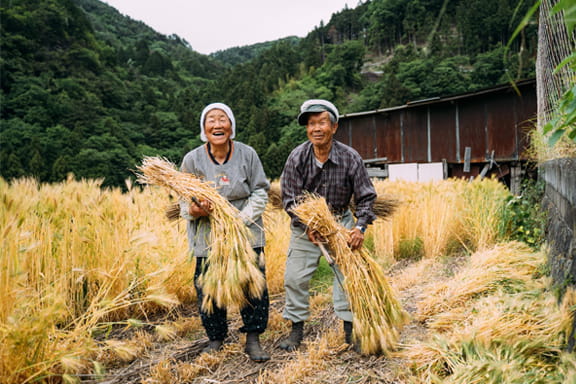
Shop for the GIAHS’s brand-certified products at Michi-no-Eki Sadamitsu Yuyukan
This roadside station features a symbolic 23-meter-tall tower that offers 360° views of the surrounding landscape, including the Yoshino River and Mt. Tsurugi. You can purchase products such as fresh vegetables and dumplings made with assorted grains directly from producers at the local products center. The restaurant serves Handa somen noodles and dishes made with Awa-odori chicken (a brand of local chicken), allowing you to appreciate the local flavors.
Part ways at Tokushima Awaodori Airport or JR Tokushima Station
From Tokushima Awa Odori Airport, take the limousine bus to Tokushima Station, then transfer to the JR train to Awa Ikeda Station (2 hours and 10 minutes)
From Takamatsu Airport, take the limousine bus to Kotohira Station, then transfer to the JR train to Oboke Station via Awa Ikeda Station (2 hours)
From Kochi Ryoma Airport, take the limousine bus to Kochi Station, then transfer to the JR limited express to Oboke Station (1 hour and 30 minutes)
Sora-no-Sato
Telephone Number :
+81 (0)883-76-0713
Telephone Languages :
Japanese
URL :
Email :
Email Languages :
Japanese
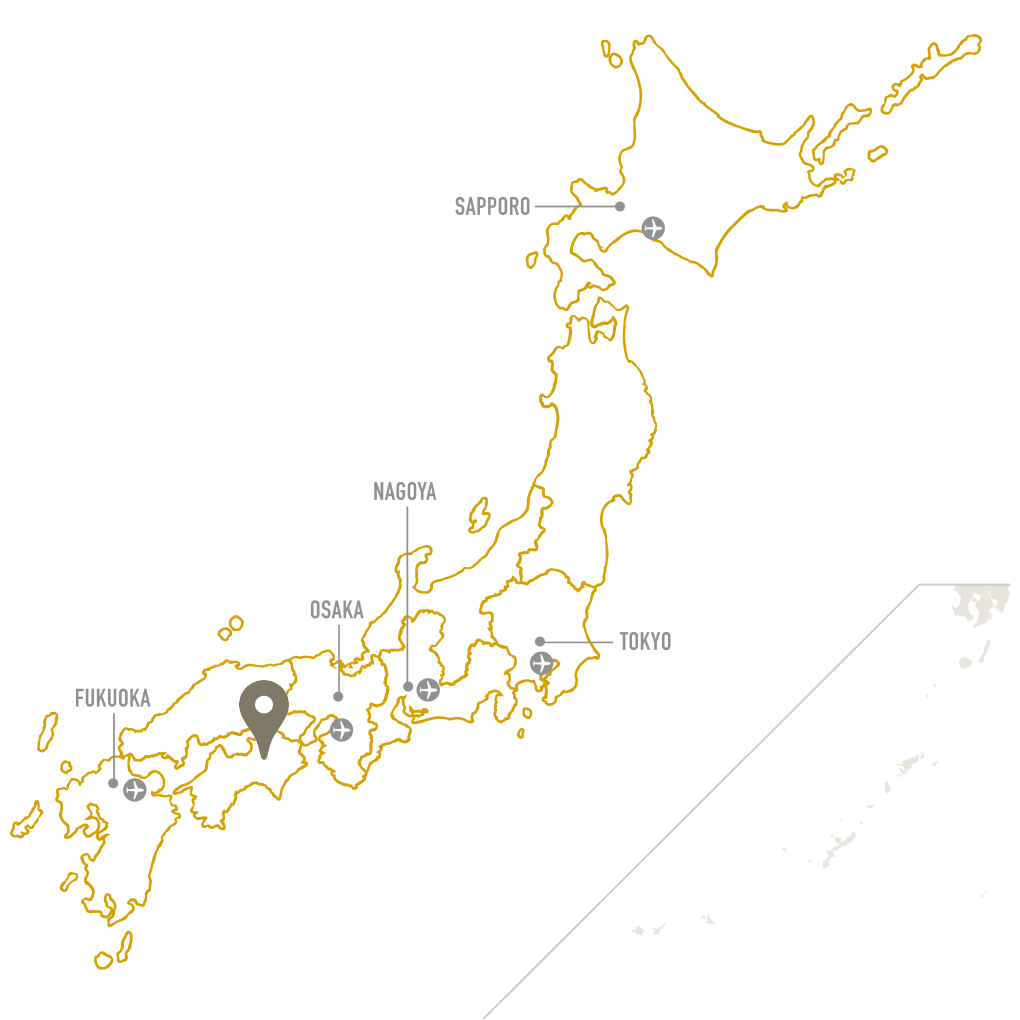


This 80+ year-old traditional Japanese house accommodates only one group per day. Popular among international guests with a deep knowledge of Japan's hidden gems, 80% of its visitors come from abroad. The inn’s allure lies in it offering a glimpse into Japan's historical past and a selection of sake from around the globe. Guests are welcome to bring their dogs and cats, and all food allergies can be accommodated.

Address :
141 Higashiiyakyojo, Miyoshi-shi, Tokushima Prefecture
Telephone Number :
+81 (0)90-5144-9277
Telephone Languages :
Japanese
Access :
40-minute drive from Oboke Station
Check-in :
From 3:00 p.m.
Check-out :
10:00 a.m.
Rates :
Entire house (up to 8 persons) with 2 meals from ¥10,000 per person
Accepted Credit Cards :
None
Bedroom :
Japanese futons
Bathroom :
Bathtub available (from check-in until check-out)
Toilet :
Western style
Meals :
Dinner, Breakfast
Wi-Fi :
Available
Website URL :
Reservation Website URL :
https://www.booking.com/hotel/jp/kaziyazu-gu-lang-man-ting.html?lang=en-us&soz=1&lang_changed=1

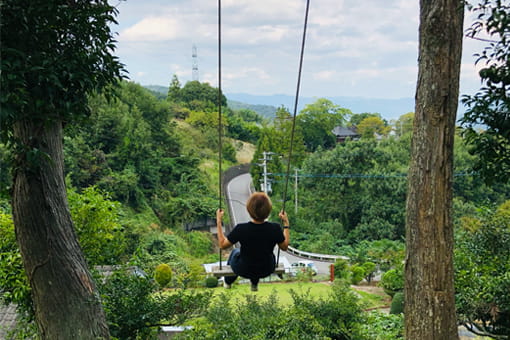
This inn, nestled 300 meters above sea level, offers a breathtaking view of Mount Kotsu. On clear nights, guests can marvel at the beautiful starry skies, while rainy days reveal a mesmerizing sea of clouds stretching out below. A specialty of the inn is homemade yuzu miso paste, best enjoyed with vegetables freshly harvested from local fields.

Address :
520 Nishiyama, Kuchiyama, Anabuki-cho, Mima-shi, Tokushima Prefecture
Telephone Number :
+81 (0)90-1326-3407
Telephone Languages :
Japanese
Access :
20-minute drive from Anabuki Station
Check-in :
3:00 p.m.
Check-out :
10:00 a.m.
Rates :
Entire house (up to 8 persons) with 2 meals from ¥10,000 per person
Accepted Credit Cards :
None
Bedroom :
Japanese futons
Bathroom :
Bathtub available (from check-in until check-out)
Toilet :
Western style
Meals :
Dinner, Breakfast
Wi-Fi :
Available
Website URL :
Reservation Website URL :


This farmhouse restaurant serves dishes prepared from local produce and World Agricultural Heritage ingredients. Dine on fresh vegetables against the backdrop of beautiful mountain views. Don’t miss the popular ¥1,300 Fuwari Set Meal, which offers an array of flavors and dishes.

Address :
307 Fuchimyo, Kuchiyama, Anabuki-cho, Mima-shi, Tokushima Prefecture
Telephone Number :
+81 (0)883-56-0725
Telephone Languages :
Japanese
Access :
1 hour and 30 minutes’ drive from Takamatsu Airport
Opening Hours :
11:30 a.m.–2:30 p.m.
Closed :
Mondays and Tuesdays (occasional holidays; check the website for details)
Cuisine :
Japanese, Cafe
Foreign Language Menu :
Not available
Accepted Credit Cards :
None
Website URL (Japanese only) :
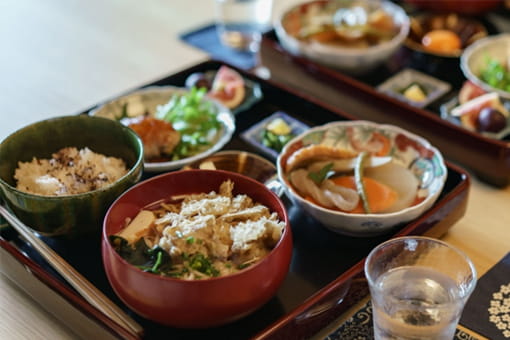

This establishment was opened in the hope of introducing traditional local flavors to the next generation, presenting innovative ways to enjoy centuries-old dishes. Located in the renovated 100-year-old Orimetei Residence, this restaurant specializes in creative Handa somen dishes served in traditional Handa lacquerware bowls.

Address :
68-1 Higashiura, Sadamitsu, Tsurugi-cho, Mima-gun, Tokushima Prefecture
Telephone Number :
+81 (0)80-6376-7328
Telephone Languages :
Japanese
Access :
60-minute drive from Tokushima Awaodori Airport, 50-minute drive from Takamatsu Airport
Opening Hours :
11:00 a.m.–2:00 p.m.
Closed :
Mondays, Tuesdays, Thursdays, Fridays
Cuisine :
Japanese
Foreign Language Menu :
Available (English)
Accepted Credit Cards :
VISA/Mastercard/AMEX/JCB
Website URL (Japanese Only) :

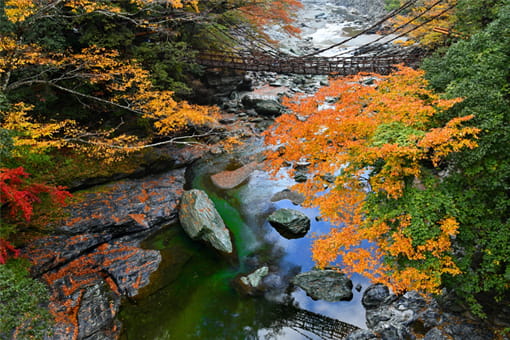
This amazing suspension bridge is made of kiwi vines (Actinidia arguta) vines that grow naturally in the Iya Valley region. Offering a spectacular view of the Iya River valley below, the bridge is replaced every three years due to aging and in order to pass down valuable skills, earning it the title as one of the Green Destinations Top 100 Stories in 2023.

Address :
162-2 Zentoku, Nishiiyayamamura, Miyoshi-shi, Tokushima Prefecture
Telephone Number :
+81 (0)883-76-0877 (Miyoshi City Tourist Information Center)
Telephone Languages :
Japanese, English
Access :
20-minute drive from Oboke Station
Duration :
April to June: 8:00 a.m.–6:00 p.m.; July to August: 7:30 a.m.–6:30 p.m.; September to March: 8:00 a.m.–5:00 p.m.
Fee :
Adults ¥550, Children ¥350
Languages Supported :
Japanese
Accepted Credit Cards :
None
Website URL :
Reservation Website URL :
https://widgets.bokun.io/online-sales/5e6d880f-5d2a-48f6-b9ff-aacba1d005b8/experience/765259
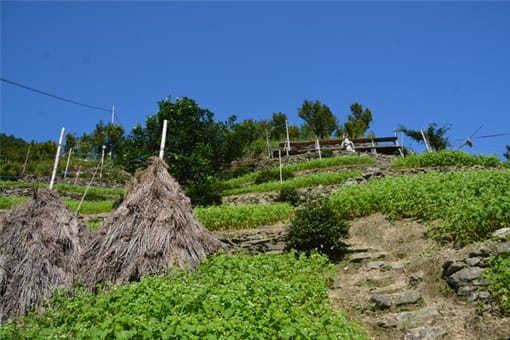
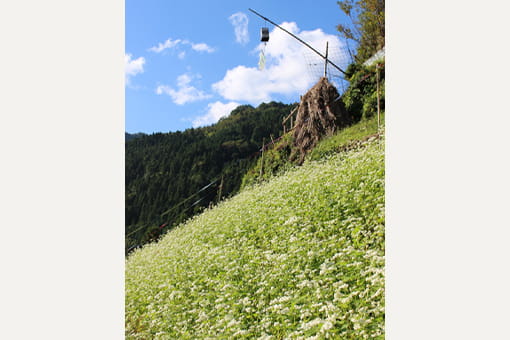
Sarukai Village in Tsurugi Town is situated on a steep slope exceeding 40 degrees and has been recognized as a World Agricultural Heritage site for its traditional farming method known as ‘slope farming.’ Every year around October, the steep buckwheat fields are blanketed with white flowers. This breathtaking tourist farm is open to the public.

Address :
Sarukai, Sadamitsu, Tsurugi-cho, Mima-gun, Tokushima Prefecture
Telephone Number :
+81 (0)883-62-3111(Industry and Economy Division, Tsurugi Town Hall)
Telephone Languages :
Japanese
Access :
1 hour and 10 minutes’ drive from Takamatsu Airport
Duration :
Late September to early October
Fee :
¥500 yen
Languages Supported :
Japanese
Accepted Credit Cards :
None
Website URL :
Reservations :
No advance registration required, deposit the fee in the deposit box in front of the tourist farm
Hokkaido
Tohoku
Hokuriku/
Shinshu
Kanto
Tokai
Kansai
Shikoku
Kyushu
Okinawa